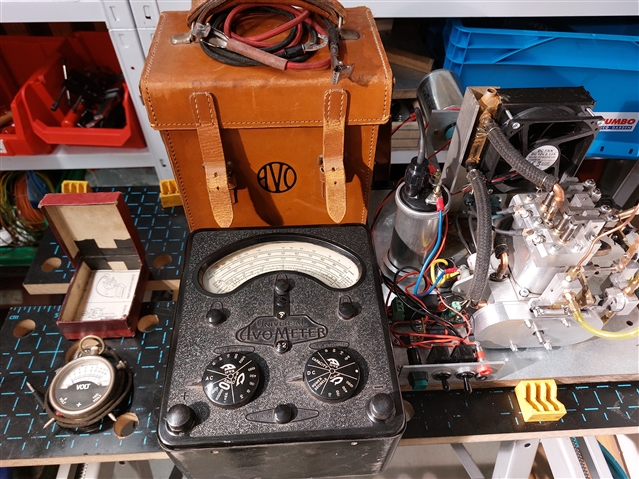Some time ago there was a thread on the topic of AVO meters which is now locked.
Shortly after my interest was re-energized and I started collecting AVOs again.
I have been disposing of my collection following extensive counselling and aversion therapy but have slipped back and have purchased an AVO 8 MK 7 which was the last mark out of the Megger factory. I have had all the Marks of the AVO 8 but never a MK 6 or a 7 which I am waiting to receive.
I think it is a nostalgia thing from my youth when I was starting out in amateur radio and always wanted one. At college early on we had a lesson on how to use an AVO which included selecting ranges and using the mirror scale. As a technician I was issued what the Post Office designated a "Meter Multi Range No. 12" . Later when promoted to a Technical Officer you were allowed to be issued with a Meter Multi Range 14C which was an AVO 8. Before the ink was dry on my appointment letter I ordered up my 14C which was sort of badge of office.
I saw on the BBC programme "The Repair Shop" where their electrical expert re-furbishing a PO 12 meter and their leather expert re-furbishing the leather case. That sparked me in to buying one on Ebay to do the same as a memento of the past. I now have a 12D instrument which was made by AVO in the leather case.
Has anyone else on this forum become an AVO collector or use one from time to time for its intended purpose? I used my MK 6 when doing some experiments where my Fluke DVM would not do due to it's high input impedance.,
Is there a support group for this minority group as I am off to an amateur radio show soon with a pocket full of cash and I fear I will be overcome with temptation if I see an AVO 8.

 Here is my father's model 7 and case along with grandad's radio test meter
Here is my father's model 7 and case along with grandad's radio test meter